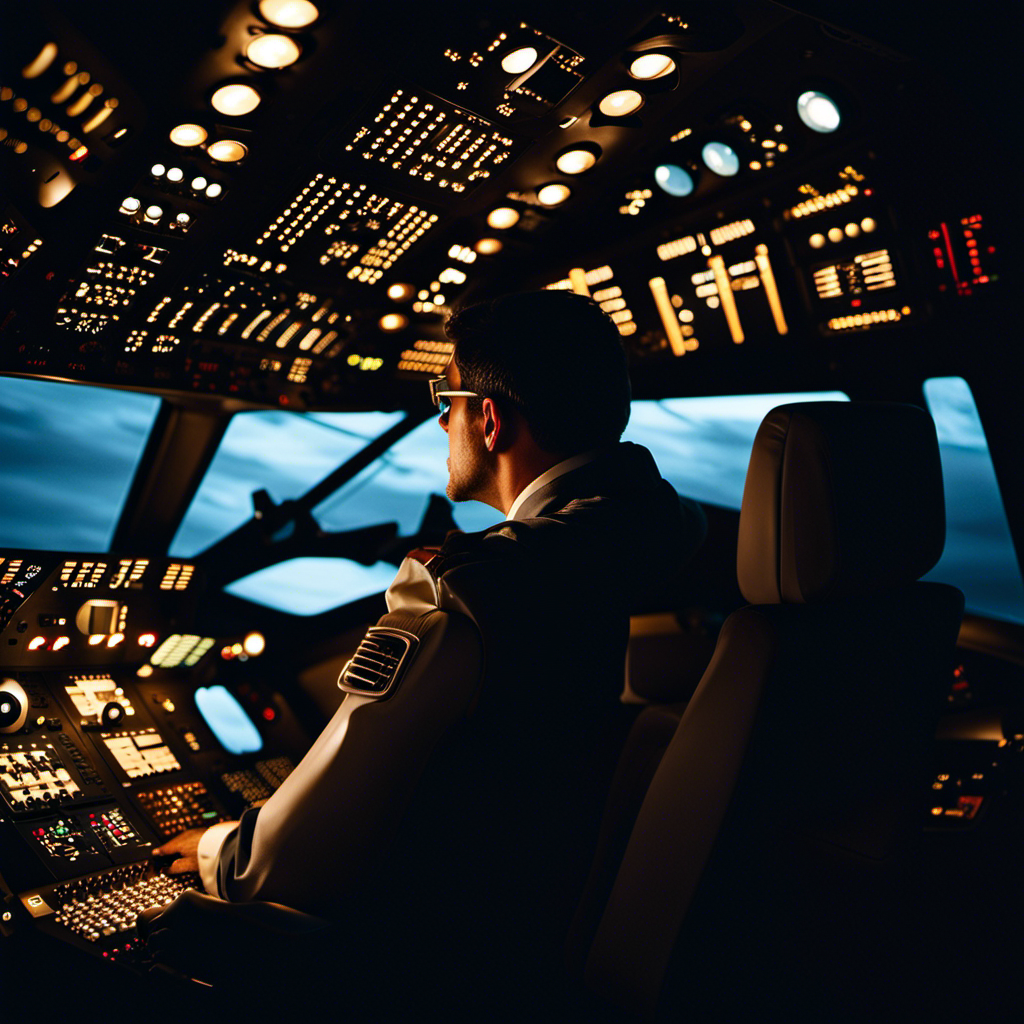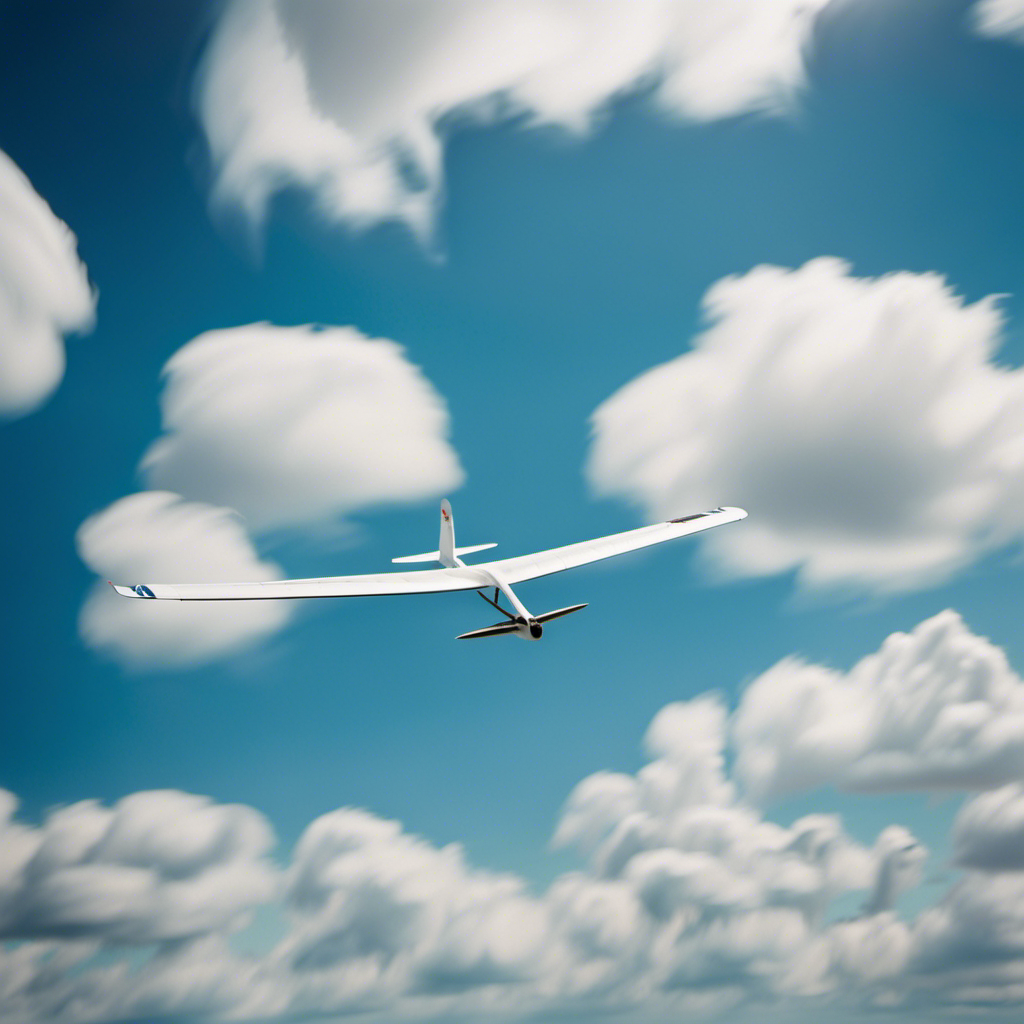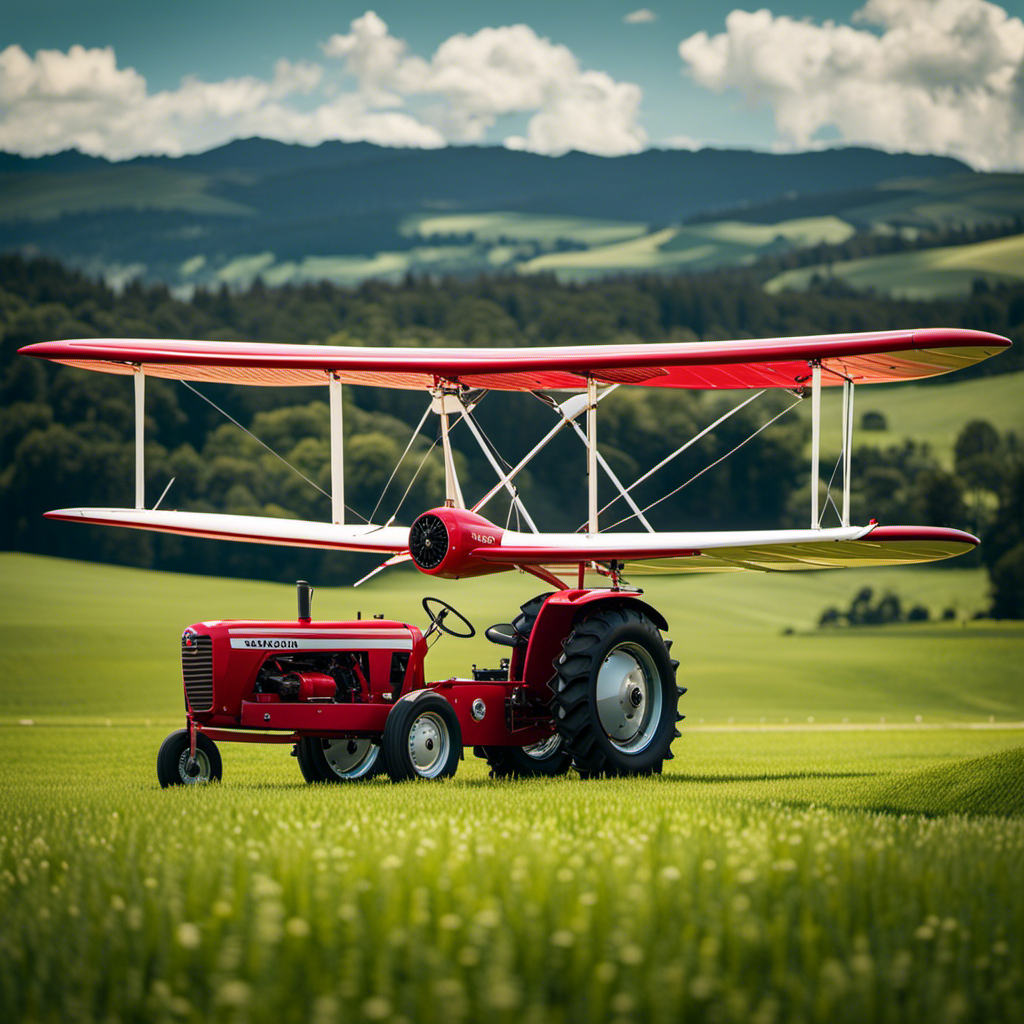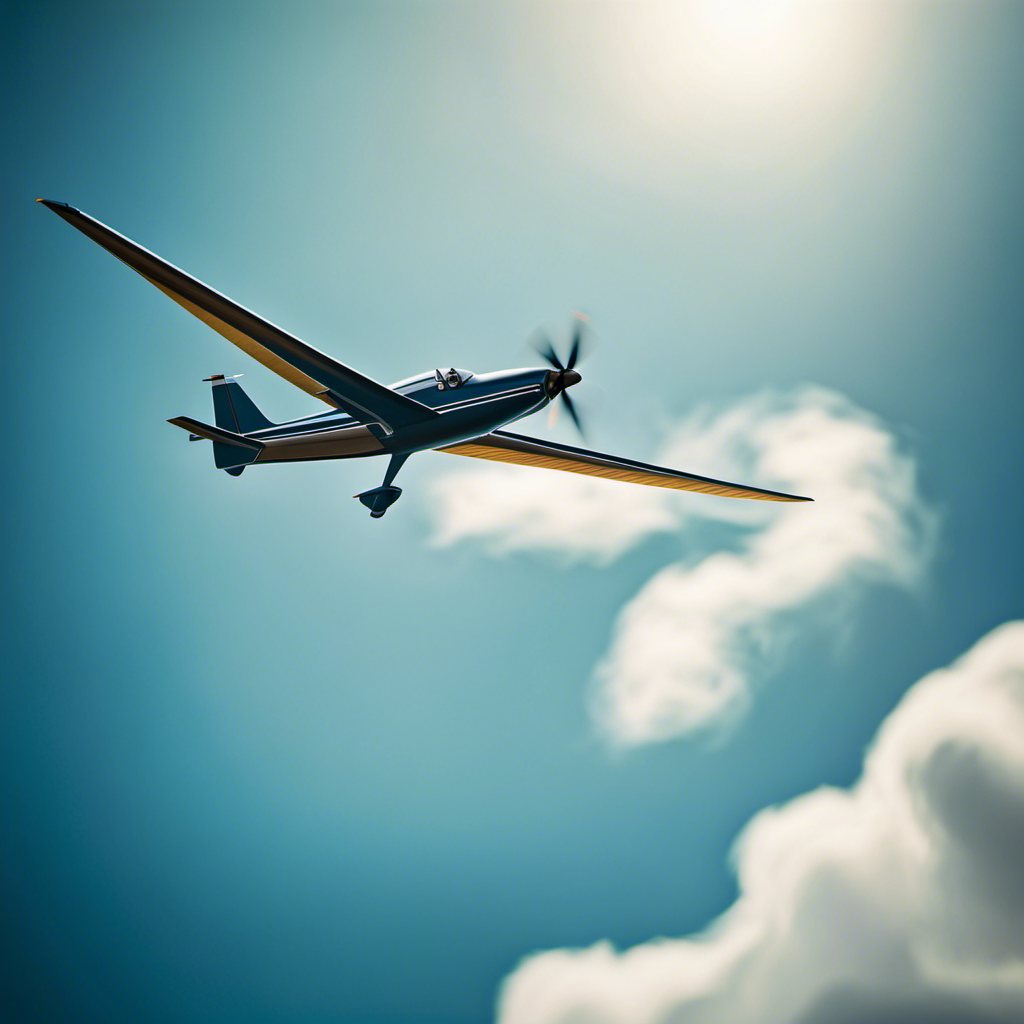Just like a conductor leads an orchestra, my responsibility is to prioritize the safety and well-being of all passengers in my care. As a pilot, the decision to rest is a crucial matter.
In this article, we will delve into the importance of pilot rest and alertness, the regulations and protocols for in-flight sleep, and how pilots manage sleep and fatigue.
Join me as we explore the fascinating world of pilot sleep and the measures taken to ensure the skies remain safe.
Key Takeaways
- Prioritizing rest and alertness is crucial for ensuring safety during flights.
- Regulations and protocols are in place to manage pilot sleep and prevent fatigue-related errors.
- Understanding the circadian rhythm and implementing strategies, such as adjusting sleep schedules and using melatonin supplementation, can minimize the effects of jet lag.
- Strategic rest periods, adherence to guidelines, and the support of co-pilots and crew members are essential for maintaining high alertness and flight safety.
The Importance of Pilot Rest and Alertness
As a pilot, prioritizing rest and alertness is essential for ensuring safety during flights. Compliance with regulations and assessing pilot fatigue are crucial aspects of maintaining optimal performance. The aviation industry recognizes the detrimental effects of fatigue on pilots and has implemented various regulations to address this issue. These regulations require pilots to adhere to specific duty and rest requirements, which help mitigate the risks associated with fatigue. To assess pilot fatigue, different tools and methods are used, such as fatigue risk management systems and fatigue modeling software. These tools assist pilots and aviation organizations in effectively evaluating and managing fatigue levels. By following regulations and implementing proper fatigue assessment measures, pilots can enhance their alertness and reduce the likelihood of fatigue-related incidents. Now, let’s explore the regulations and protocols for in-flight sleep.
Regulations and Protocols for In-Flight Sleep
There are specific regulations and protocols in place for pilots who need to rest during a flight. These sleep regulations and pilot protocols are designed to ensure the safety and well-being of both the pilots and the passengers.
The Federal Aviation Administration (FAA) has established guidelines that dictate the amount of rest time required for pilots, depending on the length of the flight and the number of flight segments. These regulations take into account the circadian rhythm, the body’s internal clock that regulates sleep and wakefulness.
Adhering to these protocols is crucial for pilots to maintain alertness and prevent fatigue-related errors. Understanding the circadian rhythm and jet lag is essential for pilots to effectively manage their sleep schedules and minimize the impact of crossing multiple time zones.
By following these regulations and protocols, pilots can effectively manage their rest and ensure the safety of everyone on board.
In the next section, we’ll explore the circadian rhythm and its relationship to jet lag.
Understanding the Circadian Rhythm and Jet Lag
Understanding the circadian rhythm and jet lag is crucial for effectively managing rest and minimizing the impact of crossing multiple time zones. Jet lag prevention and improving sleep quality are essential for pilots to perform at their best. Here are three important factors to consider:
-
Light exposure: Exposing oneself to natural daylight or bright light can help regulate the body’s internal clock and reduce the effects of jet lag. Conversely, avoiding bright light at night can promote better sleep quality.
-
Sleep schedule adjustment: Gradually adjusting sleep schedules before traveling can help synchronize the body with the destination time zone. This can be done by going to bed and waking up slightly earlier or later each day.
-
Melatonin supplementation: Melatonin is a hormone that helps regulate sleep-wake cycles. Taking melatonin supplements at the appropriate time can aid in adjusting to a new time zone and improving sleep quality.
By understanding the circadian rhythm and implementing these strategies, pilots can better manage their sleep and minimize the effects of jet lag.
Now let’s delve into how pilots effectively manage sleep and fatigue in their demanding profession.
How Pilots Manage Sleep and Fatigue
One important aspect of effectively managing sleep and fatigue for pilots is implementing strategic rest periods during long flights. Pilot rest guidelines and fatigue mitigation strategies play a crucial role in ensuring the safety of the crew and passengers.
According to industry standards, pilots are required to have a certain amount of rest before and during flights. These guidelines aim to minimize the risk of fatigue-related incidents and promote alertness in the cockpit. Pilots are encouraged to take short nap breaks during long flights as a way to combat fatigue. These strategic rest periods can help alleviate the effects of sleep deprivation and improve cognitive performance.
By adhering to these guidelines and implementing fatigue mitigation strategies, pilots can maintain a high level of alertness and ensure the safety of the flight.
Now let’s explore the role of co-pilots and crew in ensuring safety.
The Role of Co-Pilots and Crew in Ensuring Safety
The role of co-pilots and crew in ensuring safety is crucial during flights.
Co-pilots share responsibilities with the pilot, helping to navigate, communicate with air traffic control, and monitor the aircraft’s systems. They act as a second set of eyes and ears, assisting the pilot in making critical decisions and handling emergencies.
Crew members, including flight attendants, play a vital role in ensuring the safety and well-being of passengers. They are responsible for cabin safety, providing emergency instructions, and assisting with evacuations if necessary.
Additionally, crew sleep protocols are in place to ensure that pilots and crew members get adequate rest before and during flights. These protocols include designated rest periods and sleep facilities on long-haul flights.
Transitioning to the next section, let’s explore the sleep facilities and rest areas on aircraft.
Sleep Facilities and Rest Areas on Aircraft
Passengers can find comfort in the sleep facilities and rest areas available on long-haul flights. These amenities are designed to ensure optimal sleep quality and duration for both passengers and crew.
Here are four key features of these sleep facilities:
-
Sleeping Pods: These private compartments provide a quiet and cozy environment for passengers to rest. Equipped with comfortable beds, pillows, and blankets, they allow for uninterrupted sleep.
-
Lie-Flat Seats: Some airlines offer lie-flat seats in their business and first-class cabins. These seats can recline to a fully flat position, providing a comfortable sleeping surface for passengers.
-
Noise-Canceling Headphones: To enhance sleep quality, noise-canceling headphones are provided to block out ambient noise, ensuring a peaceful environment for rest.
-
Dimmed Lighting: The cabin lighting is adjusted to create a calming atmosphere, promoting relaxation and aiding in falling asleep.
With these sleep facilities, passengers can enjoy a restful journey, arriving at their destination feeling refreshed and rejuvenated.
Now, let’s explore the monitoring systems for pilot alertness, ensuring the safety of the flight without compromising sleep.
Monitoring Systems for Pilot Alertness
With monitoring systems in place, you can ensure the safety of the flight while still prioritizing rest.
Monitoring systems play a crucial role in detecting and mitigating pilot fatigue, which is a significant concern in aviation. These systems utilize advanced technologies to continuously monitor pilot alertness levels and provide real-time feedback. They can track parameters such as eye movement, head posture, and even brainwave activity to assess the pilot’s level of fatigue.
By analyzing this data, monitoring systems can alert the crew when fatigue levels are high, prompting them to take necessary rest breaks or engage in fatigue management strategies. These systems are designed to enhance safety by preventing incidents caused by pilot fatigue.
Transitioning into the subsequent section about training and education for pilot sleep management, it is essential to understand how these monitoring systems can be effectively integrated into pilot training programs.
Training and Education for Pilot Sleep Management
To effectively manage your sleep as a pilot, it is crucial to implement comprehensive training and education programs. Pilot fatigue management and sleep training techniques are essential for maintaining optimal performance and safety in the aviation industry.
These programs should cover various aspects of sleep, including sleep physiology, sleep disorders, and strategies for improving sleep quality and quantity. Training should also address the importance of maintaining a regular sleep schedule, managing jet lag, and implementing effective pre-flight and in-flight sleep strategies.
Additionally, education programs should provide pilots with information on the impact of sleep deprivation on cognitive function, alertness, and decision-making abilities. By equipping pilots with the knowledge and skills to effectively manage their sleep, we can mitigate the risks associated with pilot fatigue and ensure the highest level of performance in the cockpit.
The Effects of Sleep Deprivation on Pilot Performance
The effects of sleep deprivation on a pilot’s performance can be detrimental to their cognitive abilities and decision-making skills. Research has shown that sleep deprivation has a significant impact on decision making, as it impairs the pilot’s ability to assess risks accurately and make sound judgments. Additionally, sleep deprivation affects reaction time, making it slower and less efficient. This can be particularly dangerous in high-pressure situations that require quick thinking and rapid responses.
To further illustrate the impact of sleep deprivation on pilot performance, consider the following table:
| Cognitive Abilities | Decision-Making Skills | Reaction Time |
|---|---|---|
| Impaired | Compromised | Slower and Inefficient |
As the table demonstrates, sleep deprivation has a negative effect on all three aspects, which are crucial for a pilot’s performance.
Considering the importance of sleep quality for optimal performance, it becomes imperative to focus on strategies for optimizing sleep during long-haul flights.
Strategies for Optimizing Sleep during Long-Haul Flights
As mentioned earlier, sleep deprivation can have detrimental effects on a pilot’s performance, leading to impaired cognitive function and increased risk of accidents. However, in order to mitigate these risks and optimize sleep during long-haul flights, there are several strategies that pilots can employ.
First, establishing a consistent sleep schedule is crucial. This involves going to bed and waking up at the same time every day, even on non-flying days. Additionally, creating a sleep-friendly environment by minimizing noise and light disturbances, using earplugs and eye masks, and investing in a comfortable pillow and blanket can greatly enhance sleep quality.
It is also important to avoid stimulants such as caffeine and alcohol before bed, as they can disrupt sleep patterns. By implementing these strategies, pilots can maximize their sleep efficiency and minimize the negative effects of sleep deprivation.
Transitioning into the subsequent section about the science behind power naps and sleep cycles, let’s delve into the fascinating realm of sleep science.
The Science behind Power Naps and Sleep Cycles
Establishing a consistent schedule for bedtime and wake-up time, even on non-flying days, is crucial for optimizing sleep during long-haul flights. As a pilot, understanding the science behind power naps and sleep cycles can greatly enhance my performance and alertness during flights. Here are some key points to consider:
- Power nap benefits:
- Boosts alertness and cognitive function
- Enhances memory and learning
- Reduces fatigue and sleepiness
- Improves mood and motivation
- Increases productivity and performance
Understanding sleep cycle stages is also essential:
- Stage 1: Light sleep, easily awakened
- Stage 2: Deeper sleep, body temperature drops
- Stage 3: Deep sleep, difficult to wake up
- REM sleep: Rapid Eye Movement, where dreams occur
By incorporating power naps strategically into my sleep routine and aligning them with the appropriate sleep cycle stages, I can maximize the benefits and wake up feeling refreshed and rejuvenated.
This understanding of sleep science is crucial for maintaining optimal performance and safety in aviation.
Sleep Disorders and Aviation Safety
To ensure aviation safety, it’s important to be aware of the potential risks and consequences of sleep disorders.
Pilot sleep disorders can have a significant impact on flight performance and decision-making abilities. Sleep deprivation, in particular, can impair cognitive function, attention, and reaction time, increasing the likelihood of errors and accidents.
Conditions such as insomnia, sleep apnea, and shift work disorder can disrupt a pilot’s sleep patterns, leading to chronic sleep deprivation and fatigue. It is crucial for pilots to undergo regular sleep assessments and seek appropriate treatment for any sleep disorders.
By addressing these issues, we can minimize the risks associated with pilot sleep disorders and promote safer skies.
Now, let’s explore how managing sleep in different time zones can further optimize pilot performance.
Managing Sleep in Different Time Zones
You can optimize your performance as a pilot by effectively managing your sleep in different time zones. It is crucial to adapt to the new time zone quickly to minimize sleep deprivation and ensure alertness during flights. Here are four strategies you can employ to manage your sleep and adapt to different time zones:
-
Plan ahead: Adjust your sleep schedule a few days before your flight to align with the destination time zone.
-
Stay hydrated: Drink plenty of water to stay hydrated, as dehydration can worsen sleep deprivation.
-
Avoid caffeine and alcohol: These substances can disrupt your sleep patterns and make it difficult to adjust to a new time zone.
-
Use natural light: Expose yourself to natural light during the day to help regulate your internal body clock.
By following these techniques, you can effectively manage your sleep and adapt to different time zones, ensuring optimal performance as a pilot.
Now, let’s explore some case studies of successful in-flight sleep practices.
Case Studies of Successful In-Flight Sleep Practices
Now, let’s take a look at some real-life examples of how pilots have successfully managed their rest during flights. In order to better understand the successful practices employed by pilots, I have compiled a table showcasing a few case studies.
| Case Study | Successful Practice |
|---|---|
| Case 1 | Controlled Napping |
| Case 2 | Strategic Sleep Scheduling |
| Case 3 | Crew Resource Management |
| Case 4 | Utilizing In-Flight Amenities |
In Case 1, pilots have found success in incorporating controlled napping during long-haul flights, allowing them to combat fatigue and maintain alertness. Case 2 highlights the importance of strategic sleep scheduling, where pilots carefully plan their sleep patterns before and during flights to optimize rest. Crew Resource Management, as seen in Case 3, involves effective communication and cooperation among the flight crew to ensure that everyone gets adequate rest. Lastly, Case 4 emphasizes the utilization of in-flight amenities such as lie-flat beds and sleep pods to improve sleep quality and duration.
As we explore these successful practices, it is crucial to consider future innovations in pilot sleep technology.
Future Innovations in Pilot Sleep Technology
Looking ahead, it’s important to explore the potential advancements in technology that could revolutionize the way pilots rest during flights.
The future of pilot sleep technology holds great promise for enhancing safety and efficiency in aviation. One exciting innovation is the development of wearable devices that can monitor pilot fatigue levels in real-time. These devices, equipped with advanced sensors, can detect changes in heart rate, brain activity, and eye movement, providing valuable insights into the pilot’s sleep patterns.
Additionally, advancements in cabin design are being explored, with the integration of sleep pods that offer a comfortable and secluded space for pilots to rest during long-haul flights. These pods would be equipped with noise-canceling technology and adjustable lighting to create a conducive environment for quality sleep.
The future of pilot sleep technology is bright, with these innovations aiming to improve pilot well-being and ultimately enhance flight safety.
Frequently Asked Questions
What are the regulations regarding pilot rest and sleep during flights?
Pilot rest regulations and sleep management are crucial for ensuring aviation safety. Guidelines dictate the minimum rest periods for pilots, accounting for duty time, time zone changes, and workload. Adequate sleep is essential to prevent fatigue-related errors and maintain optimal performance.
How do pilots manage their sleep and combat fatigue?
Pilot sleep patterns are carefully managed to combat fatigue. Adequate rest periods are scheduled before and between flights. Sleep deprivation effects, such as impaired performance and decision-making, are mitigated through strict adherence to regulations and sleep management strategies.
What are the roles of co-pilots and crew members in ensuring pilot safety during sleep?
Co-pilots and crew members play a crucial role in ensuring pilot safety during sleep. They manage pilot workload, communicate important information, and monitor the aircraft systems. Effective communication and teamwork are essential for a successful rest period.
Are there specific strategies for optimizing sleep during long-haul flights?
As an experienced pilot, I can assure you that optimizing sleep during long-haul flights is crucial. To achieve optimal sleep duration, pilots may use approved sleep aids specifically designed for their needs.
What are some future innovations in pilot sleep technology?
In the future, pilot sleep technology will include smart beds and wearable sleep trackers. These innovations will optimize sleep during long-haul flights, ensuring pilots are well-rested and alert for safe operations.
Conclusion
In conclusion, the ability for a pilot to go to sleep during a flight is not only possible but crucial for their rest and alertness.
Regulations and protocols are in place to ensure that pilots can effectively manage their sleep and fatigue while in the air. Understanding the circadian rhythm and implementing strategies to combat jet lag are also important factors.
The role of co-pilots and crew members in maintaining safety cannot be underestimated. By addressing sleep disorders and implementing successful in-flight sleep practices, the aviation industry continues to prioritize pilot rest.
As technology advances, future innovations in pilot sleep technology will further enhance safety and efficiency during flights.









